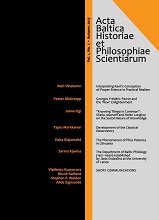The Development of the Classical Observatory: From a Functional Shelter for the Telescope to the Temple of Science
The Development of the Classical Observatory: From a Functional Shelter for the Telescope to the Temple of Science
Author(s): Tapio MarkkanenSubject(s): History of ideas, 18th Century, 19th Century
Published by: Tallinna Tehnikaülikooli õiguse instituut
Keywords: astronomical instruments; history of astronomy; methods of observation; observatories;
Summary/Abstract: At the end of the 18th century and at the beginning of the 19th century, observatory buildings underwent a change, because astronomical tools of observation had transformed from light portable equipment into permanently mounted accurate instruments. For positional astronomy, observations were mainly carried out in the meridian or in the prime vertical. A new type of telescope, the equatorially mounted refractor was adopted for the observation of objects such as planets, comets and double stars. The new instruments and methods of observation also required new approaches to observatory design. The new research needs began to determine the exterior, structure and functions of the observatory building. At the beginning of the 19th century, new standards of observatory planning were developed for the construction of the new observatories of Tartu, Helsinki and Pulkovo. Over many decades, the adopted design principles guided the construction and architecture of avant-garde observatories around the world. They also provided for the archetype of the observatory as a universal emblem for science well into the 20th century. The article discusses the development stages of these design principles and their global impacts.
Journal: Acta Baltica Historiae et Philosophiae Scientiarum
- Issue Year: 1/2013
- Issue No: 2
- Page Range: 38-52
- Page Count: 15
- Language: English

